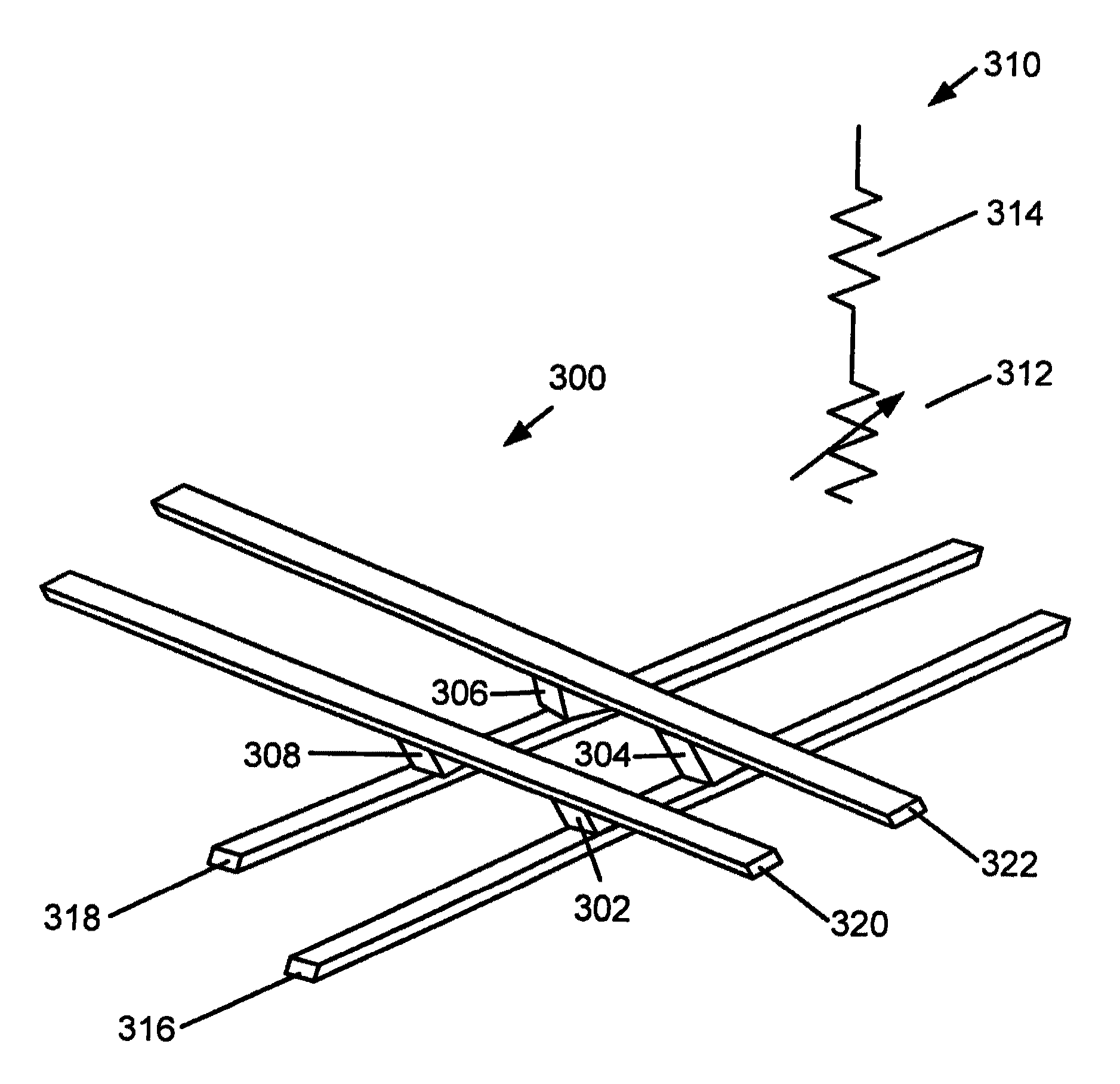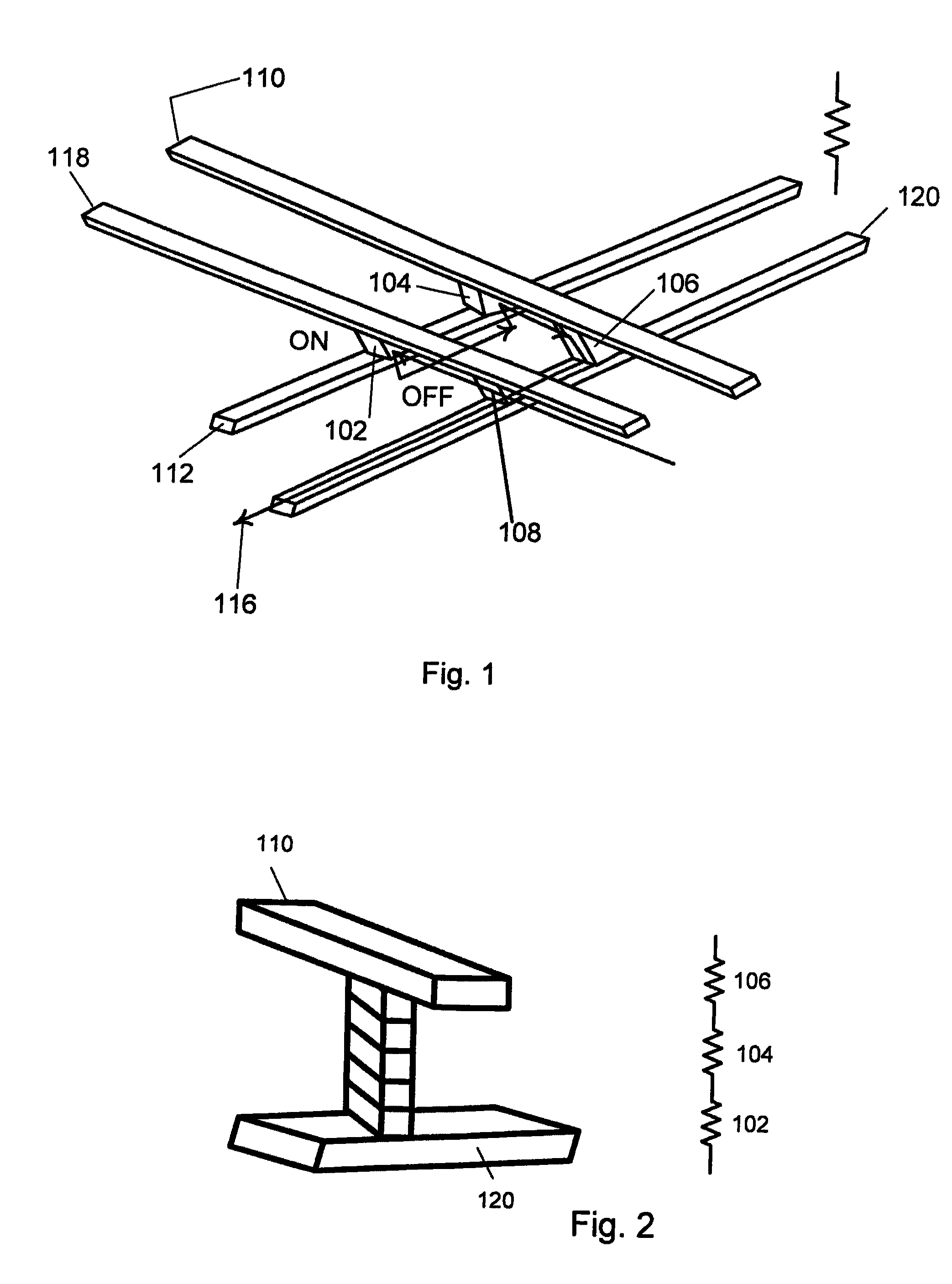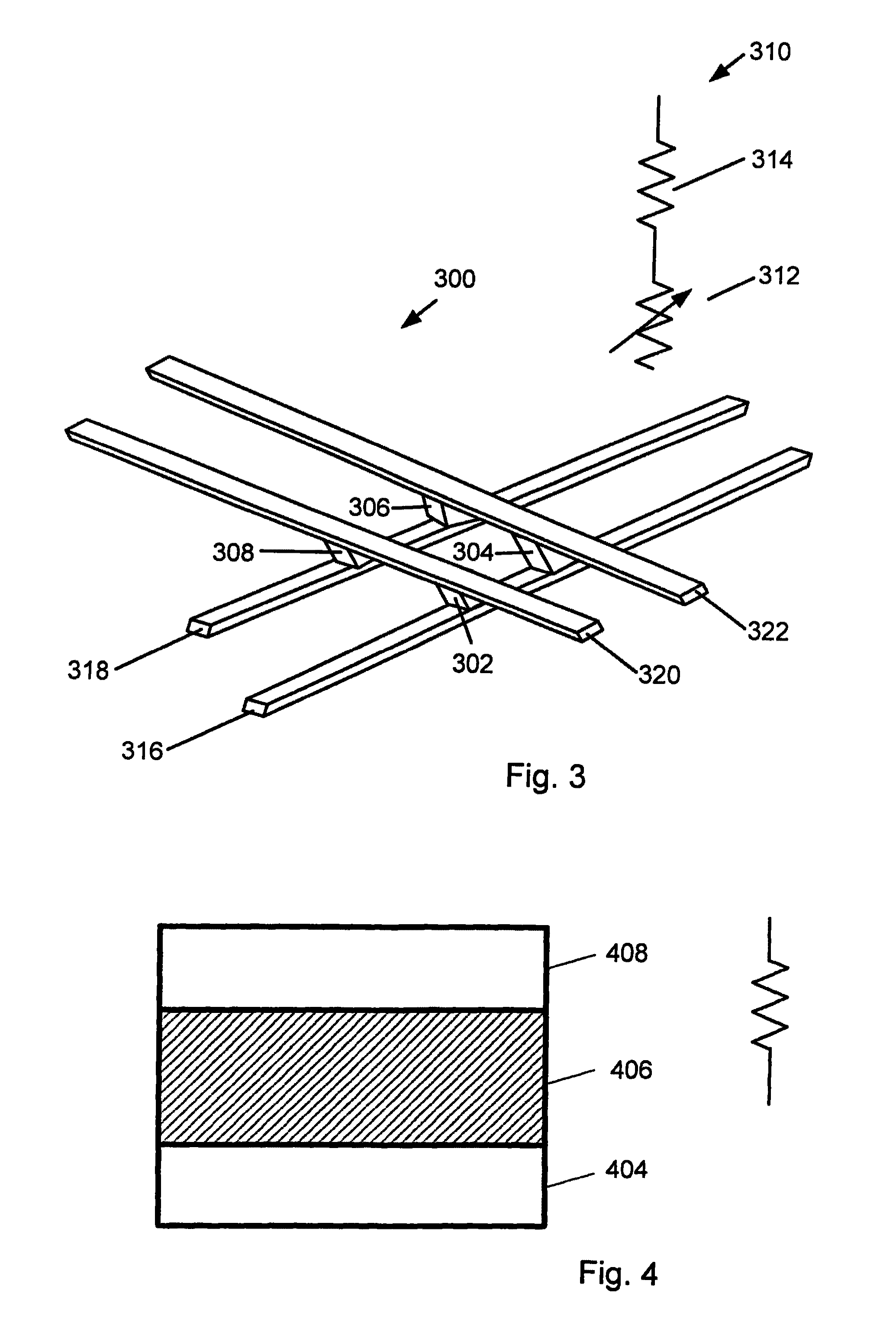Rectification element and method for resistive switching for non volatile memory device
a resistive switching and memory device technology, applied in the direction of emergency protective circuit arrangement, emergency protective arrangement for limiting excess voltage/current, instruments, etc., can solve the problems of increasing power dissipation, preventing proper device operation, and non-scaling of sub-threshold slopes, so as to improve leakage current characteristics, high switching speed, and high density. non-volatile
- Summary
- Abstract
- Description
- Claims
- Application Information
AI Technical Summary
Benefits of technology
Problems solved by technology
Method used
Image
Examples
Embodiment Construction
[0019]The illustrated embodiment described below is generally directed to a memory device that uses a resistive switching device having integrated rectification functionality. The switching device may be used in a RRAM or ReRAM or any highly interconnected and highly integrated devices. But it should be recognized that embodiments of the present invention can have a broader range of applicability.
[0020]RRAM can be a two terminal device in which a switching element is sandwiched between a top electrode and a bottom electrode. The resistance of the switching element is varied by applying a voltage to the electrodes or a current through the switching element. Resistive switching can be bipolar or unipolar. In bipolar switching, the change in resistance of the switching element depends on polarity and a magnitude of an applied voltage or an applied current. In the case of unipolar switching, the change in resistance of the switching element depends only on the magnitude of the applied v...
PUM
| Property | Measurement | Unit |
|---|---|---|
| thickness | aaaaa | aaaaa |
| dielectric constant | aaaaa | aaaaa |
| sizes | aaaaa | aaaaa |
Abstract
Description
Claims
Application Information
 Login to View More
Login to View More - R&D
- Intellectual Property
- Life Sciences
- Materials
- Tech Scout
- Unparalleled Data Quality
- Higher Quality Content
- 60% Fewer Hallucinations
Browse by: Latest US Patents, China's latest patents, Technical Efficacy Thesaurus, Application Domain, Technology Topic, Popular Technical Reports.
© 2025 PatSnap. All rights reserved.Legal|Privacy policy|Modern Slavery Act Transparency Statement|Sitemap|About US| Contact US: help@patsnap.com



